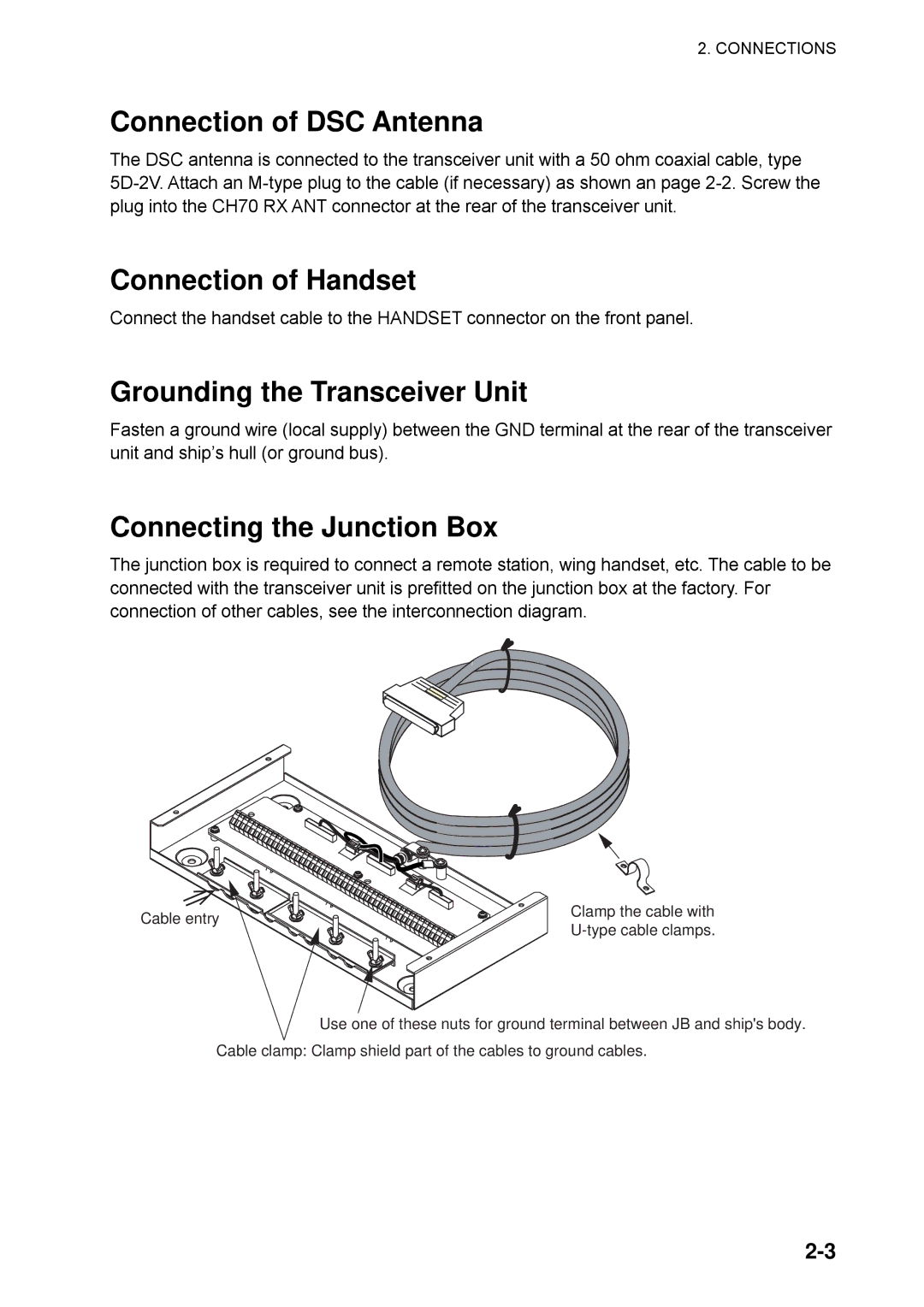FM-8800D/8800S specifications
The Furuno FM-8800D/8800S series represents a significant advancement in marine communication systems, specifically designed for commercial and recreational vessels. With an unwavering commitment to safety and reliability, these models are essential for ensuring seamless communication on the water.One of the standout features of the FM-8800D/8800S is the integrated digital selective calling (DSC) capability. This system enables users to send automated distress alerts and position reports, allowing for quick responses in emergency situations. The DSC functionality not only enhances safety but also ensures compliance with international regulations.
The FM-8800D is equipped with a powerful 25-watt transmit power, while the FM-8800S offers a slightly lower transmit power tailored for specific applications. This flexibility caters to a wide range of vessels and operations, ensuring optimal communication performance no matter the conditions.
Furthermore, both models utilize cutting-edge digital signal processing technology, which dramatically improves selectivity and clarity over traditional analog systems. This technology minimizes interference and enhances voice quality, ensuring that communications remain clear and intelligible even amid noisy environments.
The ergonomic design of the FM-8800D/8800S models includes a bright LCD display that provides easy access to various settings and functions. The user-friendly interface allows for straightforward operation, making it convenient for crew members to navigate through the system’s features without extensive training.
Additionally, the FM-8800D/8800S offers extensive connectivity options. These models can interface with GPS devices and chartplotters, allowing for the effective use of navigational information in communication. Furthermore, with the capability to support optional wireless microphones, crews can operate the radio from various locations, enhancing flexibility on the vessel.
Both models are built to endure harsh marine environments. With an IP56 rating for water and dust resistance, the FM-8800D and FM-8800S are robust and reliable, designed to perform consistently in adverse conditions. The rugged construction ensures that they will withstand the rigors of marine operations, providing peace of mind for operators.
In conclusion, the Furuno FM-8800D/8800S series stands out as a reliable marine communication solution for both commercial and recreational uses. With advanced features like DSC, superior digital signal processing, user-friendly design, and robust construction, these models deliver exceptional performance and reliability in the demanding maritime environment. Whether for safety, navigation, or everyday communication needs, the FM-8800D and FM-8800S serve as essential tools for today’s mariners.

